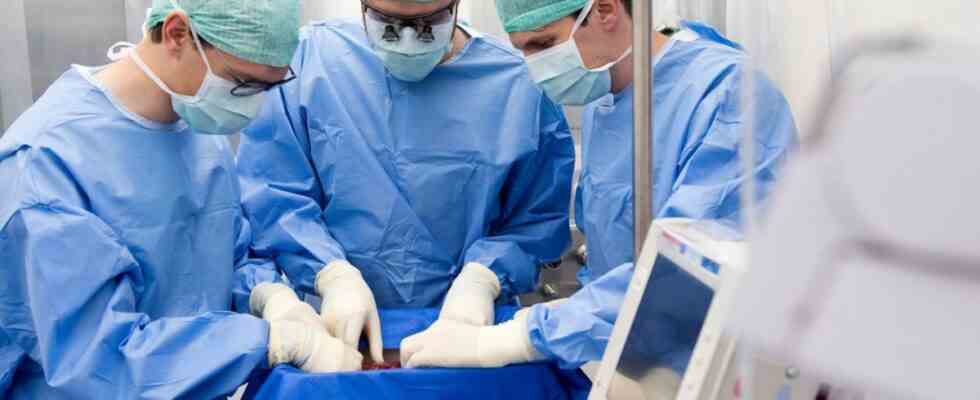Actually, the 62-year-old cancer patient with blood group 0 would have had no chance of getting a liver in Switzerland in time. “He would have had to wait about a year before he received a donor organ,” says liver transplant expert Pierre-Alain Clavien from the University Hospital Zurich. The patient, whose liver was increasingly being destroyed by a tumor and cirrhosis, did not have that much time. But in May 2021, as part of an approved individual healing attempt, the man was able to have a liver transplant that would normally not be transplanted due to poor quality. “The organ was rejected by all transplant centers because it had a tumor of unclear nature and a persistent infection,” says Clavien.
After ethical clarifications and patient information about possible risks, they completely regenerated a donor liver that would normally no longer be used three days outside the body in a machine and then transplanted it for the first time worldwide.
The 14-strong Zurich team, consisting of physicians, engineers and a biochemist, reports on this extraordinary case. in the current issue of the journal Nature Biotechnology. The terminally ill patient, who is grateful for the life-saving organ, was able to leave the hospital just a few days after the transplant. He currently only has to take low-dose immunosuppressants to prevent rejection of the transplanted organ.
A pump serves as a heart replacement, an oxygenator replaces the lungs and a dialysis unit replaces the kidneys
“We waited so long with our publication to closely monitor his health for a year,” says Clavien. It would have been fatal to prematurely celebrate the technology if the patient had died perhaps two months after the transplant. But the man is still doing well today, a year after the operation.
Only with a new machine that imitates the human body could the donor liver be made fit again by adding various drugs, including antibiotics in particular. Two years ago, a multidisciplinary team in Zurich managed to keep a liver alive for a week using a so-called perfusion machine.
The device provides ideal conditions for the donor organ: a pump serves as a heart replacement, an oxygenator replaces the lungs and a dialysis unit replaces the kidneys. In addition, numerous hormone and nutrient infusions take over the functions of the intestine and pancreas. The apparatus is designed in such a way that it also moves the donor liver to the rhythm of breathing, like the diaphragm in the human body.
In the current case, the perfusion, i.e. the mechanical perfusion of the donor organ, allowed a targeted antimicrobial therapy against infection with bacteria and fungi. In addition, the team removed the tumor over a large area and without the usual time pressure. Normally there is a maximum of twelve hours to transplant a liver.
“Without the transplantation, the former tumor patient would only have had a survival prognosis of a few months,” says Clavien. With the new technology, he hopes that other poor-quality organs can be transplanted in the future. In general, there is a global shortage of donor organs.

